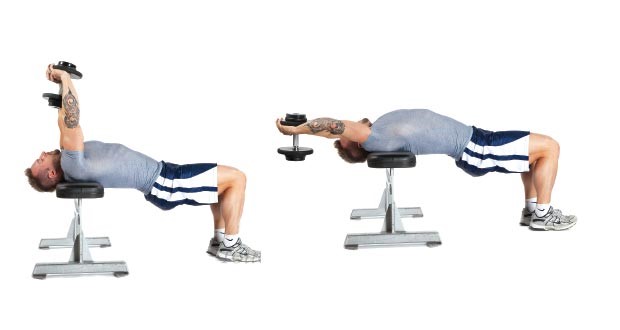

You will discover what muscles are used during the pullover machine exercise and some alternatives to the exercise for those who don’t have access to a pullover machine at your local gym. Popularized by Olympic champion Casey Victor in 1973, the pullover exercises are starting to become a popular (again) exercise in fitness programs due to their ability to work a whole range of upper body parts like the chest, back, arms and shoulder muscles, including secondary movers and stabilizer muscles. What muscles does the pullover machine work?.This exercise is not suitable during pregnancy or for those with a large diastasis (weakened linea alba causing a gap between the rectus abdominus muscle) due to the back ward stretch and the intra-abdominal pressure when bringing the arms back to above the chest. Hold it around the ears with the weighted part going overhead. I really like to use a KB for this exercise as I find it easier to hold in a balanced grip. By lifting your legs off the ground you reduce your stability, so be careful of the weight pulling you back off the bench during your pull-overs. Start with your legs raised and knees bent at 90°, then progress to extending your legs so they’re straight and hovering just above the bench. Lifting your legs and holding them just above the weight bench during the pull-over is another great way to increase the difficulty of the exercise and target your core muscles.

As you bring your arms behind your head to perform the pull-over, your core will have to work overtime to maintain good form and you help reinforce glute and core stabilization throughout the range of motion. Instead of lying on a solid weight bench, lean back on an inflatable gym ball. If you want to ramp up the challenge to your core, introduce some instability to your exercise. If your lower back arches up off the bench during the pullover, you’re likely not engaging the core as needed, or the weight might be too heavy for your core to stabilise it. This requires high engagement of the core muscles, especially the deep-lying transverse abdominis.

As the dumbbell gets farther away from your body, your core must work harder to stabilise the spine. The dumbbell pullover exercise also builds core strength and stability. The glutes and core muscles must be firing to stabilise the spine and lock down the other joints of the body. The dumbbell pullover can also help to improve shoulder mobility in that it places a stretch upon the lats and triceps, the two muscle groups often responsible for impeded shoulder mobility overhead.īy strengthening the muscles of the serratus and back at deep ranges of shoulder flexion, you can work to establish greater stability and control which will enable your body to feel capable of achieving and supporting this deeper range of motion. It can help increase chest, back, and serratus size and strength, at the same time. The dumbbell pullover exercise can use both muscle groups since it takes the shoulders through a huge range of motion. The latissimus dorsi, spanning both sides of the mid- to lower-back powers pulling movements.The pectoralis major in the front of the chest controls pushing movements.


 0 kommentar(er)
0 kommentar(er)
